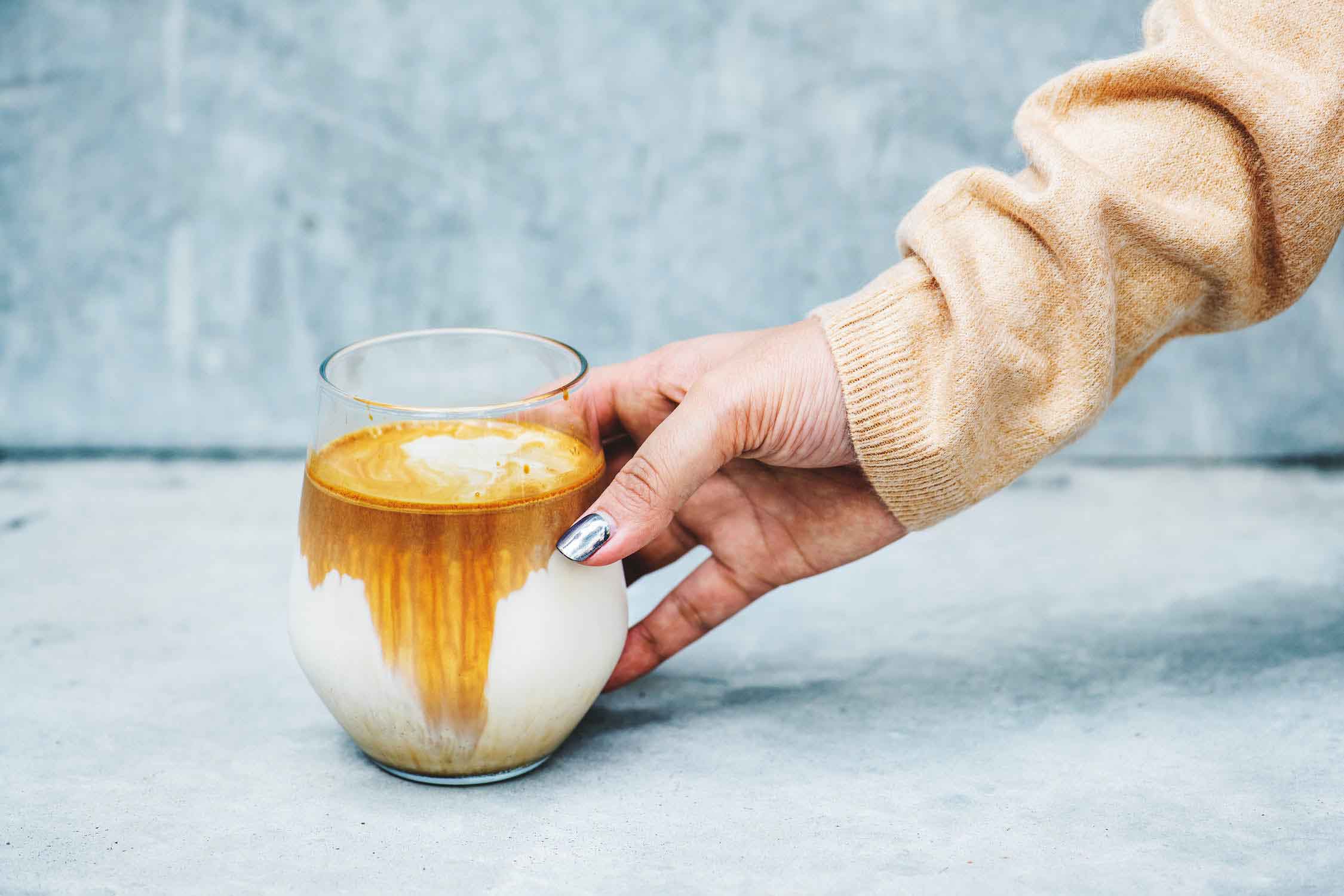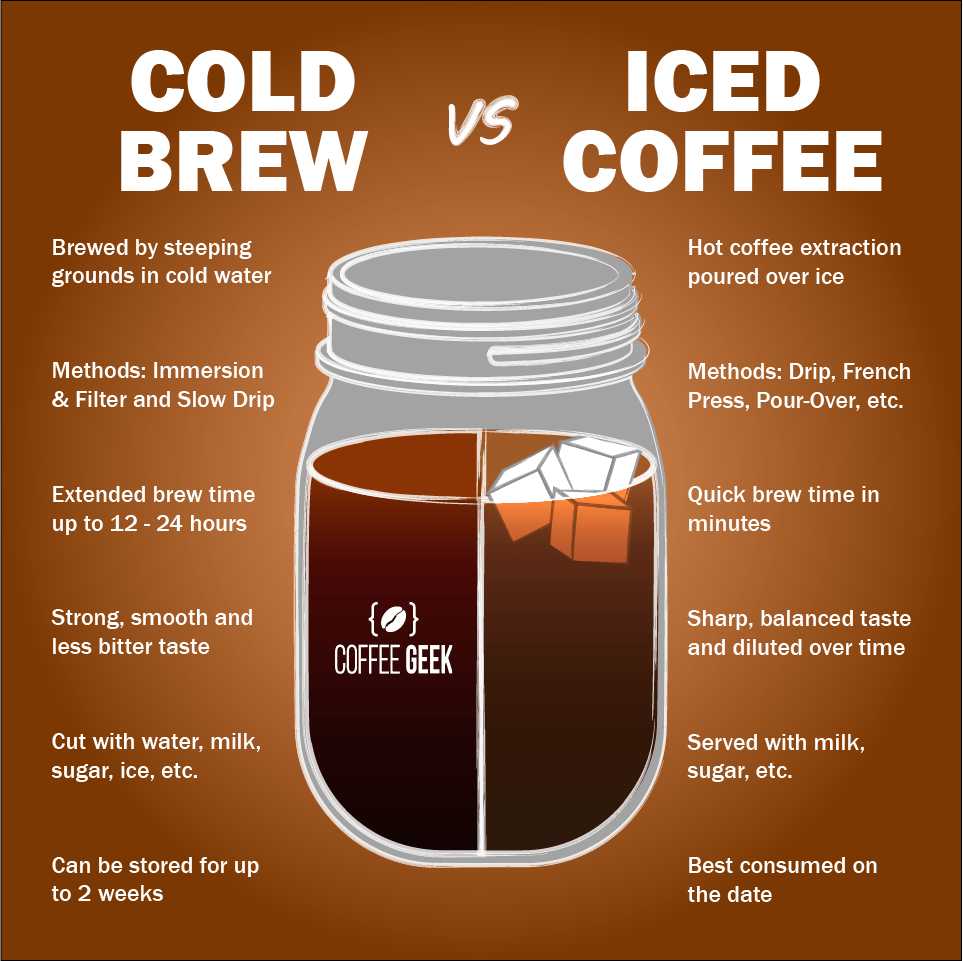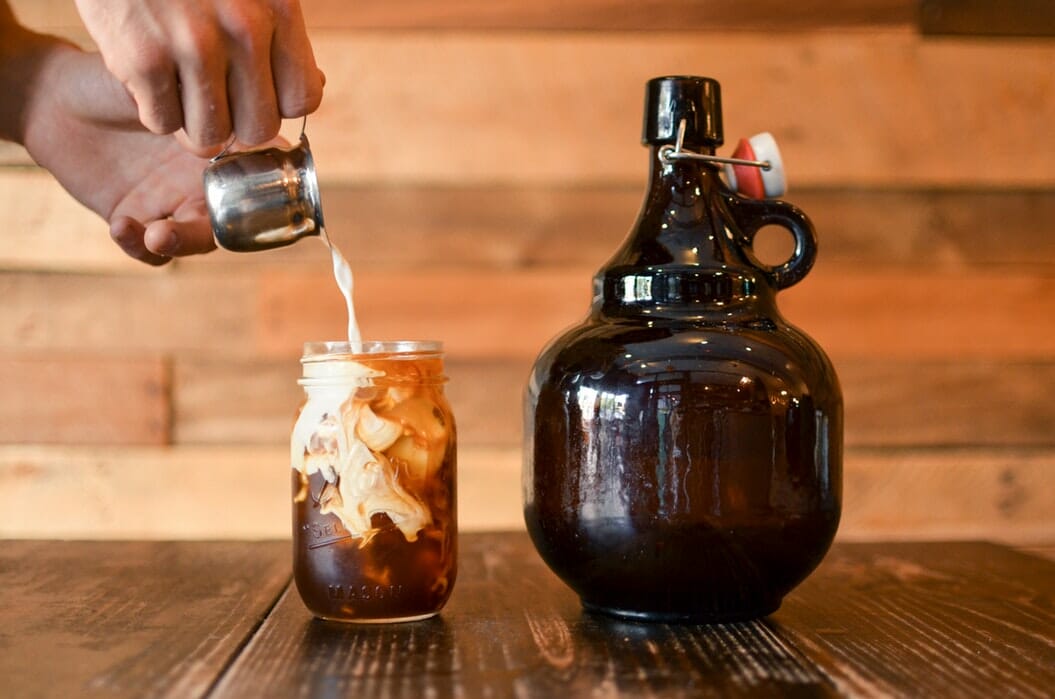If you think cold brew coffee is just a trendy new name your favorite coffee shop uses for iced coffee, it’s time for us to set the record straight.
In this Cold Brew vs Iced Coffee article, you’ll discover exactly how this unique extraction process occurs and what makes it so different from a classic iced coffee drink.
What Is Cold Brew Coffee?
“At its core, cold brew is a brewing method, not a serving method.” Mark Corey, Director of Scientific & Government Affairs for the National Coffee Association [1]
In its purest form, a cold brew method means the water and coffee grounds used are never exposed to heat during the extraction process.
According to many professionals, the water used for cold brew should be at room temperature.
Some at-home enthusiasts and professionals also advocate for letting the mixture of coffee grounds and cold water extract over a longer period of time in the refrigerator (“The NCA Guide to Cold Brew”).
The coffee drink this produces is a concentrate that is typically diluted with water and milk or milk alternative before serving.
Due to having a smooth, less bitter flavor profile than hot brew methods, many consumers opt-out of additional sweeteners and flavorings.
The exact flavor profile of a cold brew also depends on the kind of roast you use, so we’ll cover which beans work as the best coffee for cold brew a little later on.
What Is Iced Coffee?

Iced coffee indicates a way of serving a coffee drink rather than the method the coffee is brewed.
Personal preferences also play into the exact definition of an iced coffee. In every case, the coffee starts off with a heated extraction method.
This can include hot coffee made with an automatic drip-brew machine, a French press, pour-over funnel or shots of espresso.
The coffee may be chilled first and then served with ice, or it can be brewed and immediately poured over ice to chill it after the fact.
Some enthusiasts will make a double-strength brew, but this can run the risk of improper extraction.
Others will use ice cubes of frozen coffee when pouring fresh and hot coffee into the cup to keep it from tasting watered down.
We explain more about how these two terms indicate specific differences in the next section.
Difference Between Iced Coffee And Cold Brew

The most distinguishing difference between cold brew and iced coffee comes down to the application of heat during the extraction process.
Whereas the cold brew method relies on time instead of temperature to reach the proper extraction of flavorful components, iced coffee begins as traditional coffee brewed hot.
It’s easy to confuse the terms iced coffee and cold brew, but they result in completely different types of coffee drinks.
Because a cold brew coffee has fewer moving parts that can be misjudged or go wrong, it’s far more likely to achieve a pleasing flavor profile that lacks the bitterness of regularly brewed coffee.
Iced coffee that isn’t extracted properly when brewing coffee hot will taste unpleasant and maybe bitter or sour.
Best Coffee For Making Cold Brew

The process of making coffee cold-brewed allows for some experimentation when it comes to the type of coffee beans you want to use.
The long, slow extraction time draws out the best of the bean’s flavorful components without the risk of overheating the delicate volatile oils that give a roast its specific profile.
Many aficionados will still prefer a medium roast for a cold brew method, however, since it offers the most well-rounded flavor without any overpowering notes.
If you want to try your own cold brew with a lighter or darker roast, you should.
Keep reading for a step-by-step guide on how to make cold brew coffee in the comfort of your own home.
How To Make Your Own Cold Brew Coffee
While the method of making a cold brew concentrate is simple and straightforward, the right tools and measurements make all the difference.
Uniform grind size. Start with whole beans and grind them medium-to-coarse or buy pre-ground coffee with a medium-to-coarse grind size. Coffee to water ratio.
How much you prepare is up to you, but the cold brew method typically calls for 1 ounce of coffee per cup of water.
Appropriate container and lid. If you’re worried about residue or staining, use glass containers, and always use containers with tight-fitting lids to prevent spillage or cross-contamination from other foods.
Straining and filtering. Most enthusiasts prefer to both strain and filter their cold brew before serving in order to reduce silt and sediment. Serving sizes.
Cold brew is meant to be served as a cold coffee concentrate that is then diluted with half as much filtered, cold water and the optional addition of milk or a milk alternative.
You can adjust the ratios according to your preferences.
Also read more here: Cold Brew vs Hot Brew

